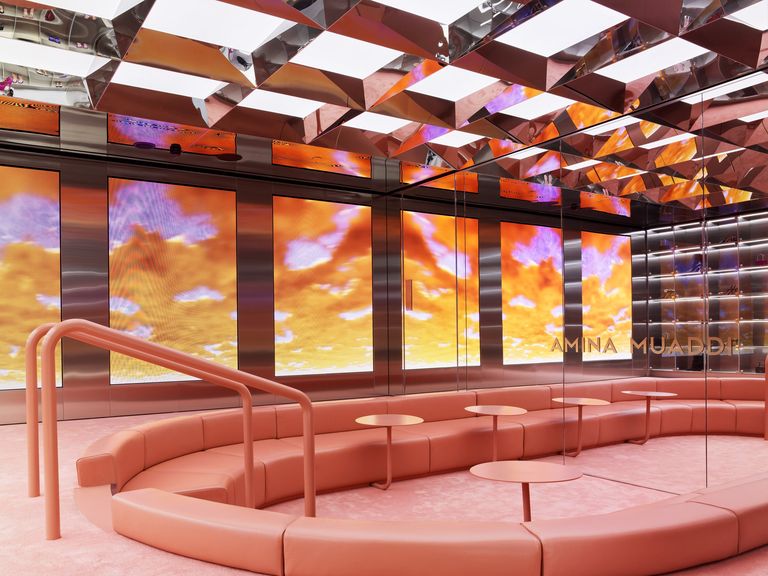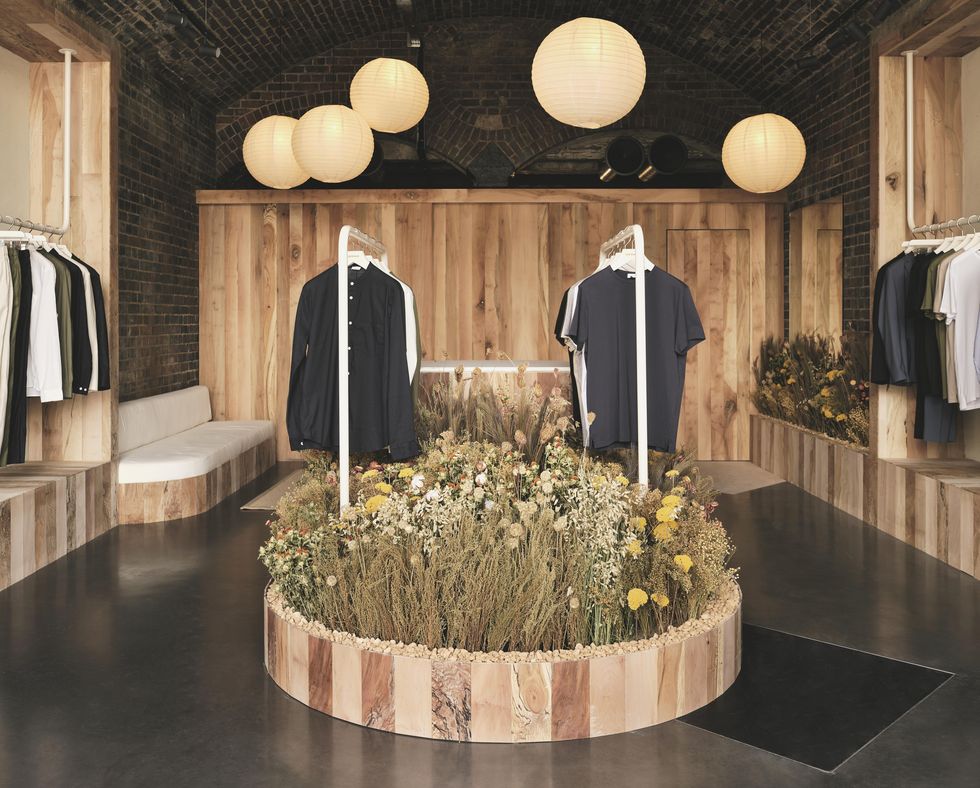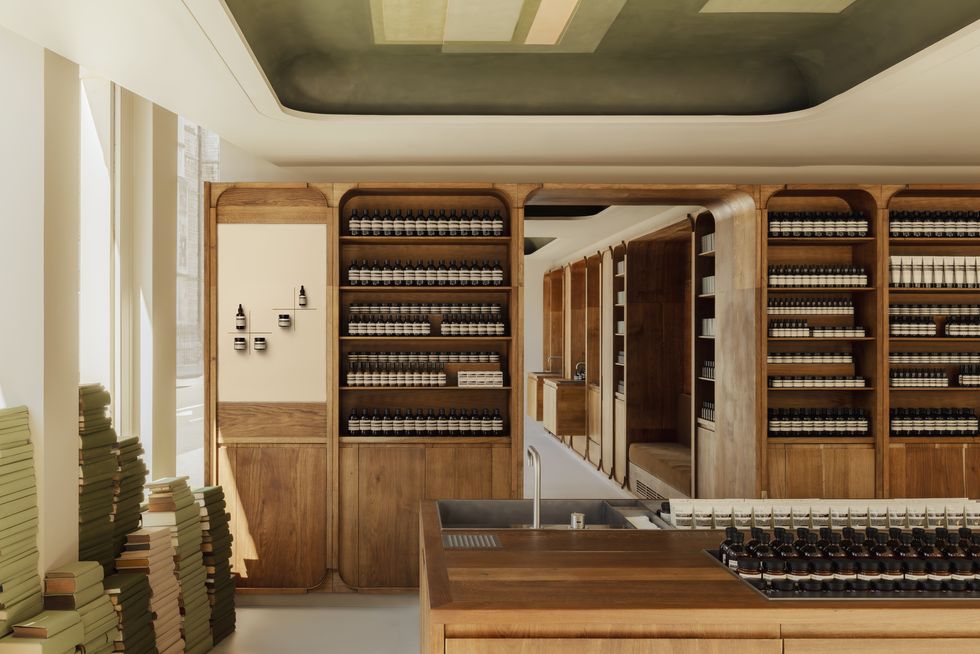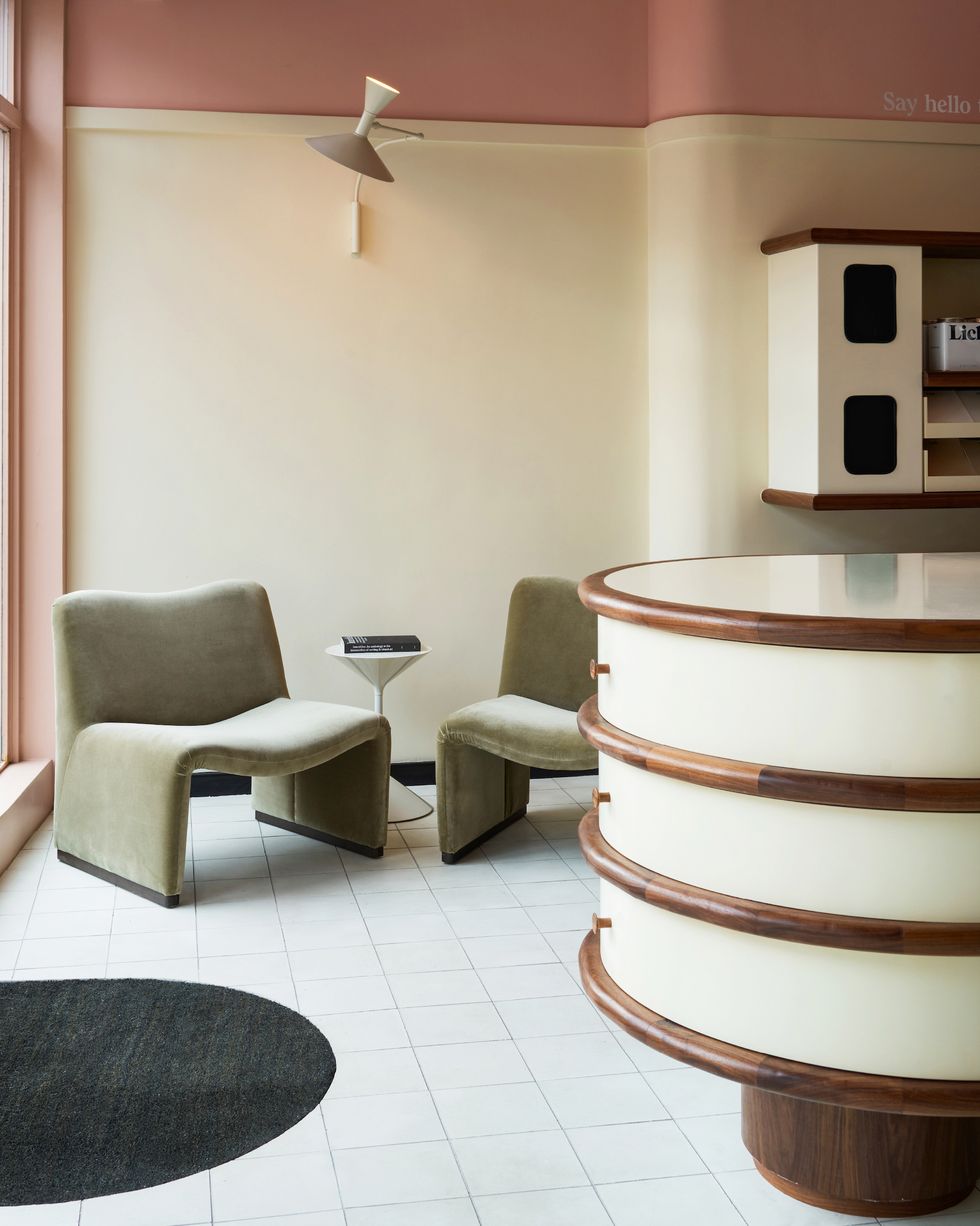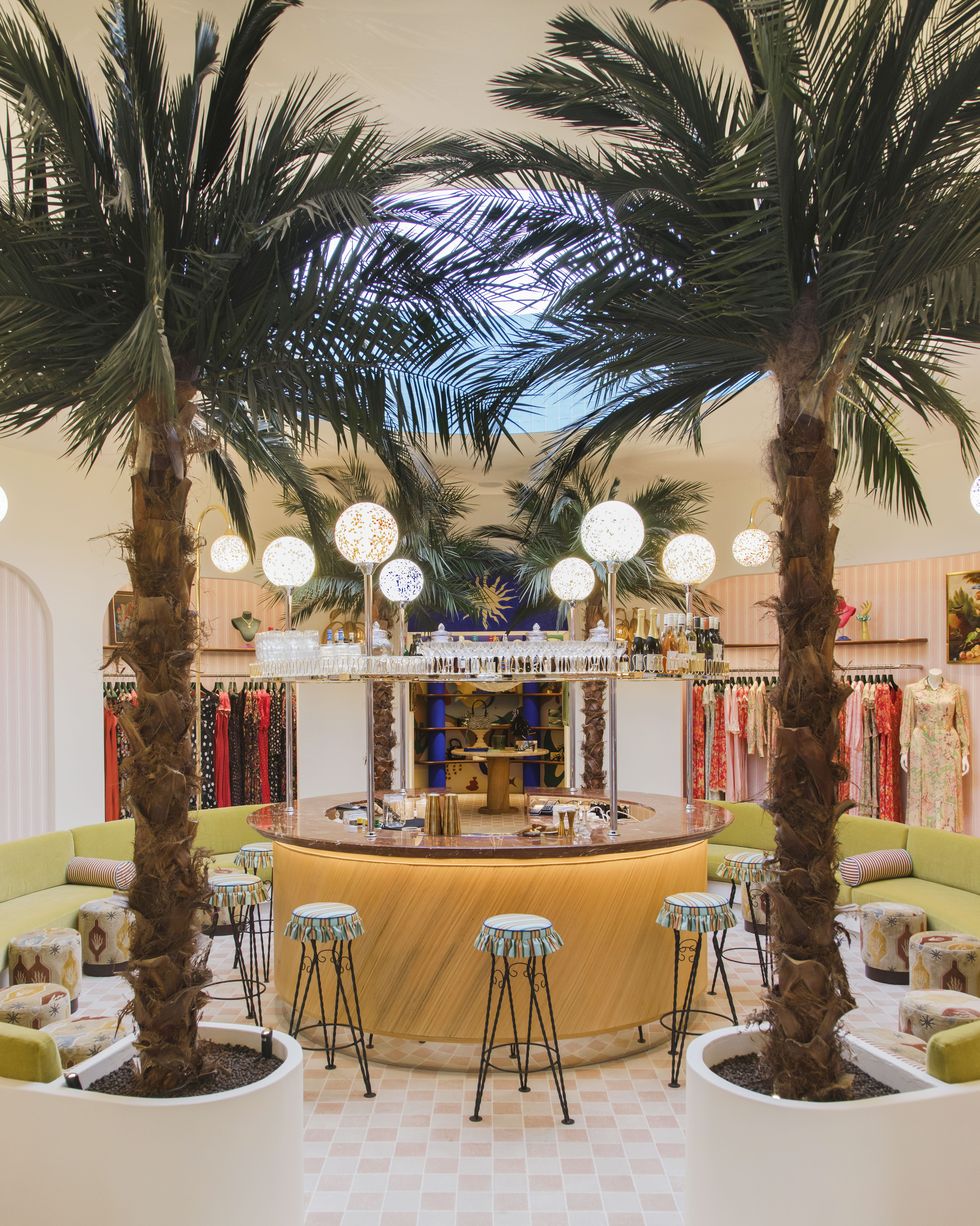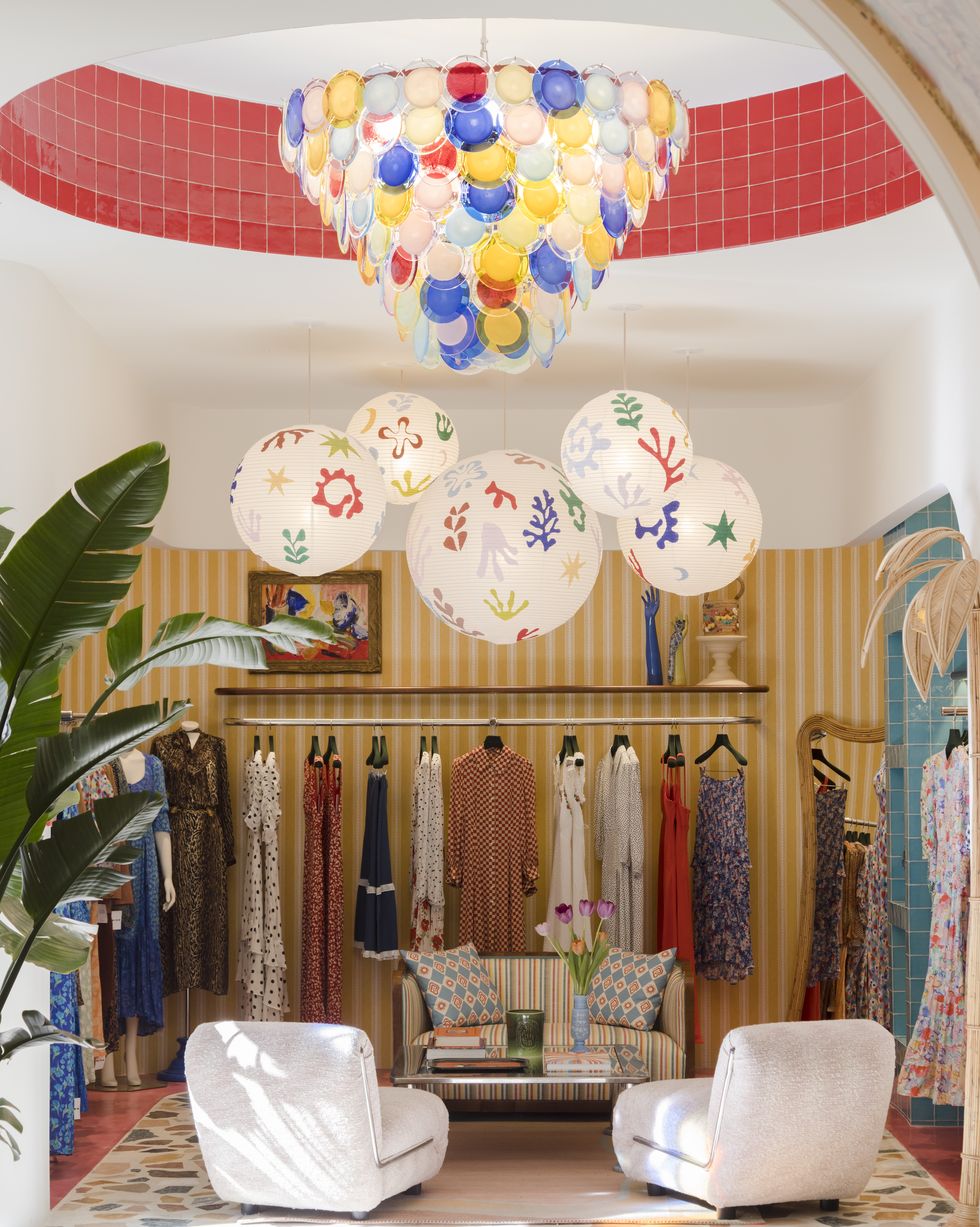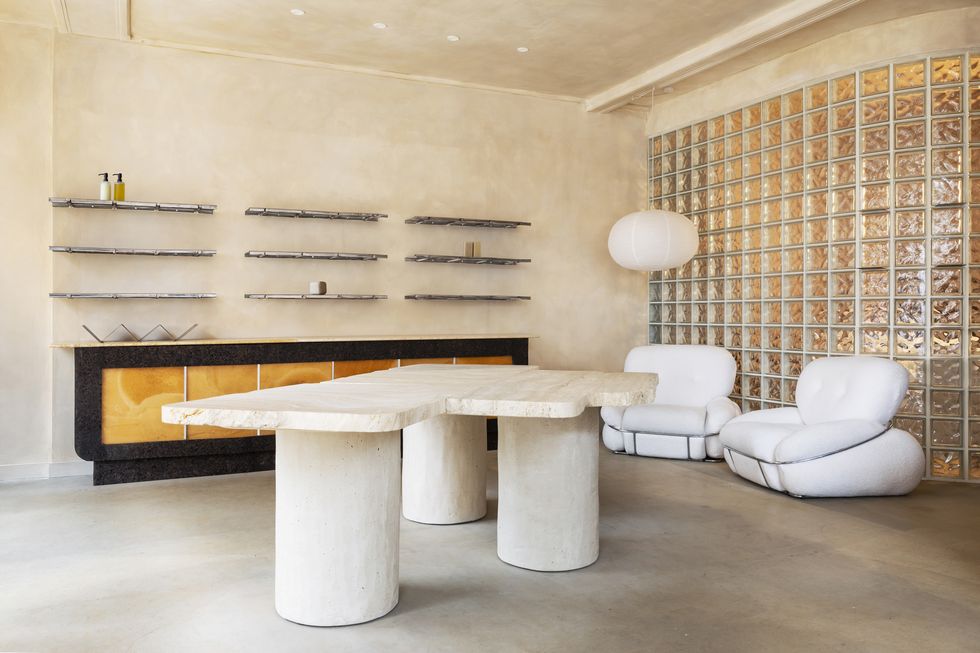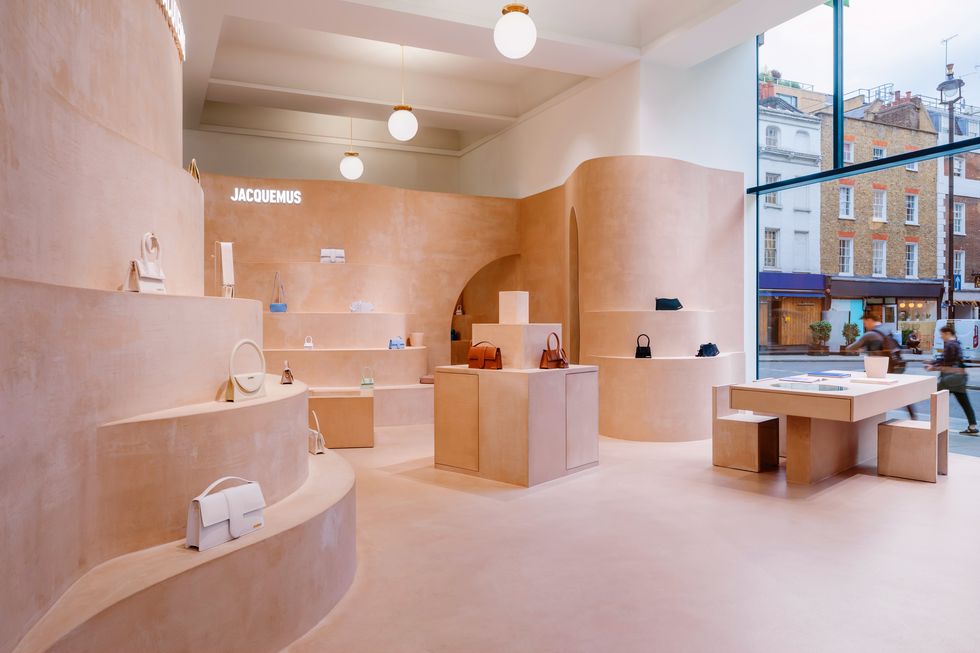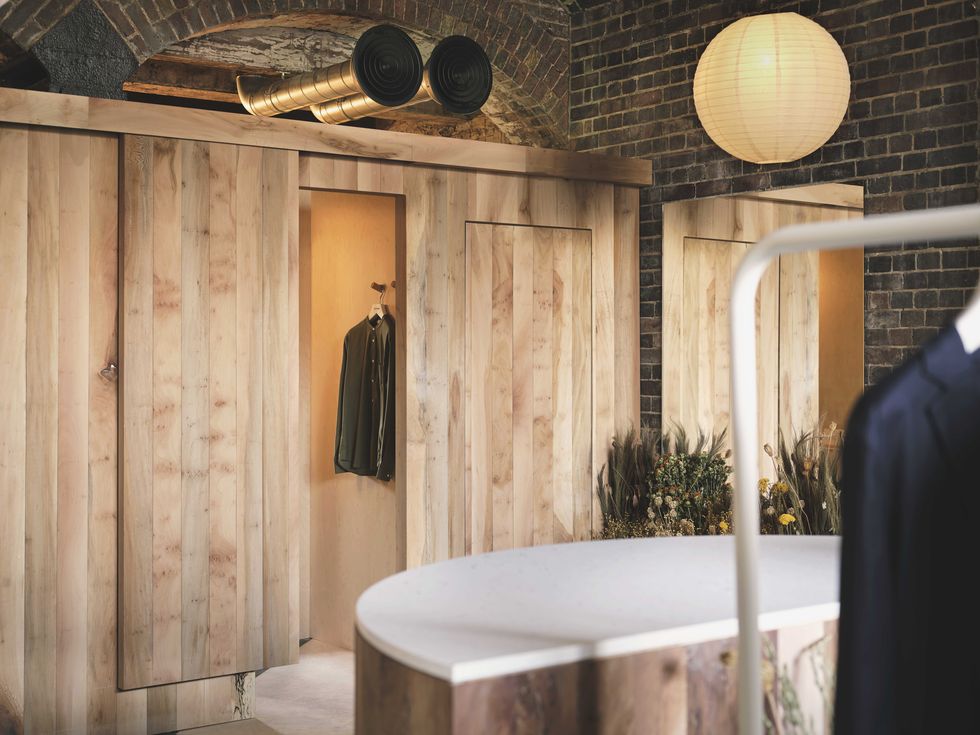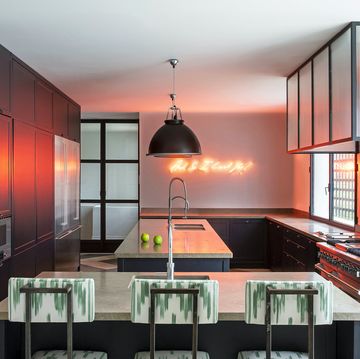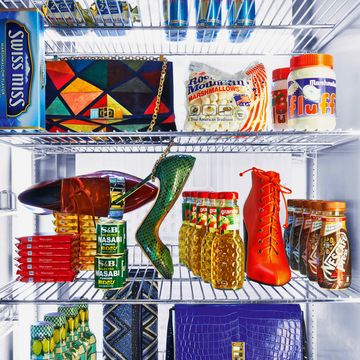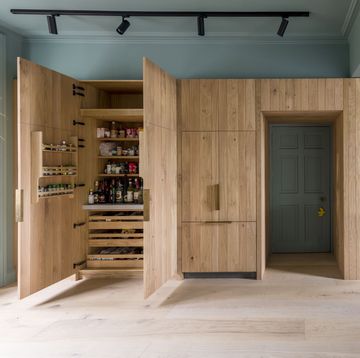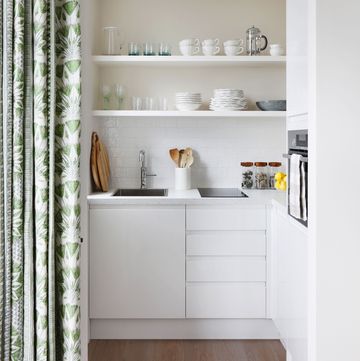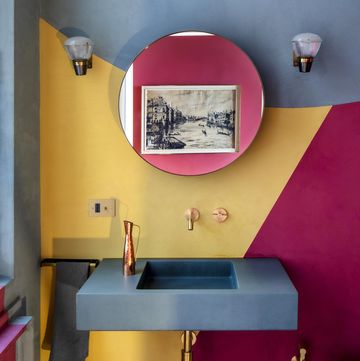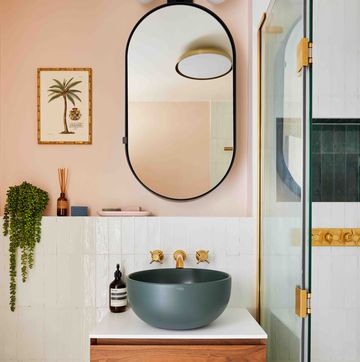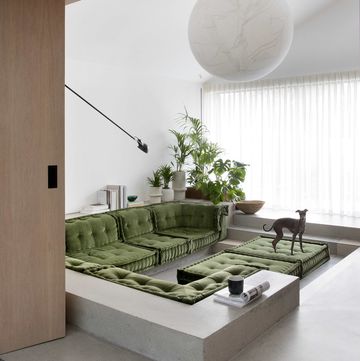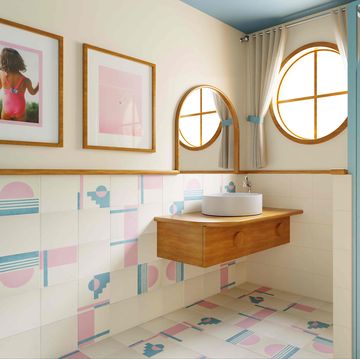During the pandemic, popping to the shops transformed overnight into something disconcertingly different, as bare shelves, masks and queues accelerated our reliance on e-commerce (see the Amazon delivery van on every street in the land).
But while there’s no denying the convenience of doorstep deliveries, there’s something special about a shop. As novelist Emile Zola noted a century ago in The Ladies’ Paradise, stores are not just spaces for customers to see, touch and smell the things they might want to buy, but portals, whether to a totally different perspective, as with Jacquemus’ surreal Selfridges boutique, or to a wildflower meadow in the heart of the city, courtesy of Fred Rigby Studio for Lestrange.
Smart brands such as Aesop seek out neighbourhoods where a strong sense of place is prized by locals, and deliberately work with designers who can reflect that in the store’s aesthetic, whether by salvaging debris from nearby demolition sites or nodding to the area’s heritage through subtle visual cues.
For its Marylebone location, Aesop commissioned furniture maker Sebastian Cox to craft English-grown oak shelves that were filled with paperbacks in homage to the area’s bookshops and the British Library down the road. The Aesop design team told us, ‘We were fascinated by Cox’s care and love for wood. We had been waiting for the right opportunity to come up, to offer him the right conditions to showcase his skills.’
Oskar Kohnen Studio designed London-based paint company Lick’s very first bricks-and-mortar store, also finding inspiration in its location (Northcote Road in Battersea), as well as in photographs of the high street from the 1950s.
‘Every one of those stores used their own simple colour combination to give identity. It’s so beautiful how colour was used back then,’ Kohnen observes, going on to explain that he wanted to celebrate paint as one of the most immediate, intuitive ways to create a space. ‘We live in a time where interiors are full of marble and precious finishes. I wanted to do the opposite,’ he says.
The desire to root a shop in its environs isn’t just driven by aesthetic or emotional reasons – it often stems from a commitment to sustainability too. So says Nina Woodcroft of Nina+Co: ‘Many brands are making their products in better ways and turning to designers to spread this ethos into store design.’ Her studio experimented with mycelium, seaweed-based bio textiles and expanded cork in the design for the Big.Beauty store in Hackney.
In a digital world where everything is available with a swipe, shops must offer something more meaningful, be it an ethical ethos or a little drama. Magnus Casselbrant and Jesper Henriksson of Hesselbrand, who designed the Kettle Kids store on Maddox Street, believe that, ‘it’s the unpredictability of not knowing what something is like until you’ve experienced it yourself that becomes the attraction in a retail space’.
That must-visit element is something Cúpla founder Gemma McCloskey focused on in her design for Rixo’s King’s Road flagship, integrating a cocktail bar and coffee shop. ‘Customers want an experience, otherwise why would they not just stay at home and shop online?’ she asks, adding, ‘mixing hospitality with retail creates a buzz’.
‘We are all craving more social interactions,’ agrees Woodcroft. Her Big.Beauty space offers a place to refill your own water bottle, change a nappy or breastfeed your baby as well as browsing the best of ethical British skincare, while Monc eyewear’s recently opened store on Chiltern Street envelops the visitor in a compostable cornstarch-foam installation that has been likened to a warm hug.
The ‘home-from-home’ ethos isn’t for everyone, though. Some have chosen a more experimental route. Take Jacquemus, which commissioned AMO, the design arm of architecture firm OMA, to create a shop-in-shop at London’s Selfridges. Even though the terracruda clay that clads the monolithic display shelving is a tribute to the brand’s Provençal roots (that link to location again), the effect is otherworldly.
Similarly, Crosby Studios’ Harry Nuriev delights in subverting expectations with disruptive interiors such as the intergalactic shop he created for Amina Muaddi inside Harrods. Silver shelves expand all the way up to the glowing ceiling, products merge with the metallic setting and, as the customer moves deeper into the space, peach-toned carpeting, pink-leather couches and powder-coated tables change the atmosphere again.
‘Windows’ (digital screens) offer escapist views of an imagined psychedelic skyscape. The effect is mischievous and disconcerting – certainly not what you would normally expect to encounter on a shopping expedition.
But can you try any of this at home? Absolutely, says Cúpla’s McCloskey. ‘We used mirror wall to wall and on the ceiling of the vintage area in the Rixo store,’ she notes, adding, ‘it transformed a really small space whilst giving a retro vibe – something that can be translated into homes’. The process can work both ways, too – the colourful gobstopper lights that McCloskey originally designed for her home found their (albeit supersized) way into the project.
Nina Woodcroft also claims to have borrowed ideas from residential designs for her retail projects. ‘For Big.Beauty store I sourced slabs of reclaimed travertine stone, reminiscent of a decadent 1970s bathroom.’ She’s also a fan of Smile Plastics’ surfaces, made from post-consumer recycled plastic, that she uses in shops and at home – the brand’s countertops, fabricated from recycled plastic yoghurt pots, can also be seen in the Lestrange store in King’s Cross, designed by Fred Rigby Studio.
Ultimately, it’s the changes to the way we shop in Britain today that have had the biggest influence on how stores are designed. ‘There is more communication between staff and customers,’ notes McCloskey. ‘The scale of the interiors reflects this and is far more intimate.’
Oskar Kohnen has a soft spot for the great British high street, musing on the contrast to the stores his firm has created in East Asia, where vast shopping malls are the norm.
Hesselbrand co-founder Magnus Casselbrant agrees: ‘From an outsider’s perspective, British stores have quite a traditional character, whether it is a coffee shop in Hackney or a tailor’s on Savile Row, but their focus on locality and personal service are excellent starting points for creating unique stores that help build a community and culture around a brand. In this way, every retail space becomes almost like a small theatre.’
Whether they act as a tranquil escape, a transportive experience or a place to connect, shops today are about more than simply selling stuff, and they also offer plenty of fresh ideas to apply to our own spaces. It could be a nudge to be bolder with colour, an innovative way to display objects or a sustainable material used in an unusual way... Perhaps we are still a nation of shopkeepers, after all – at home.
